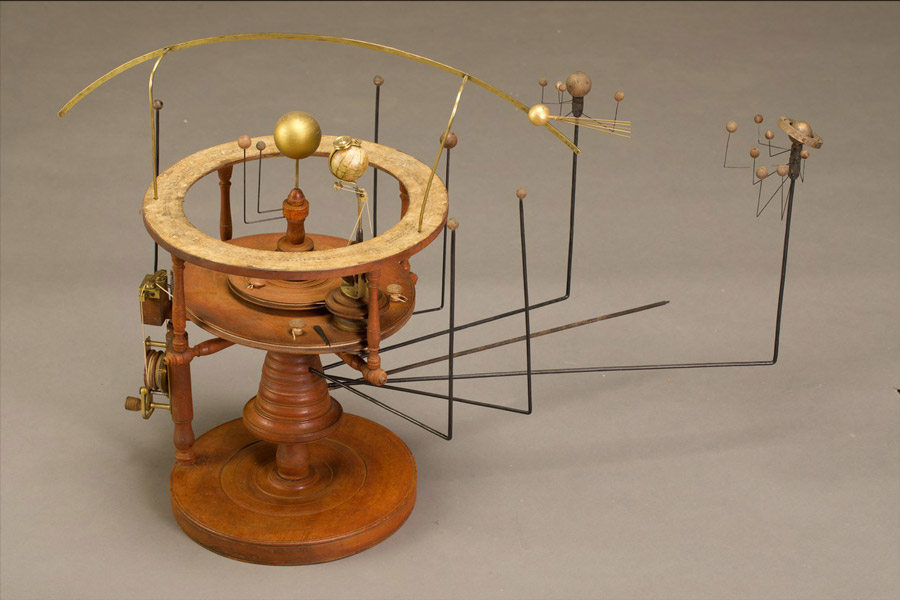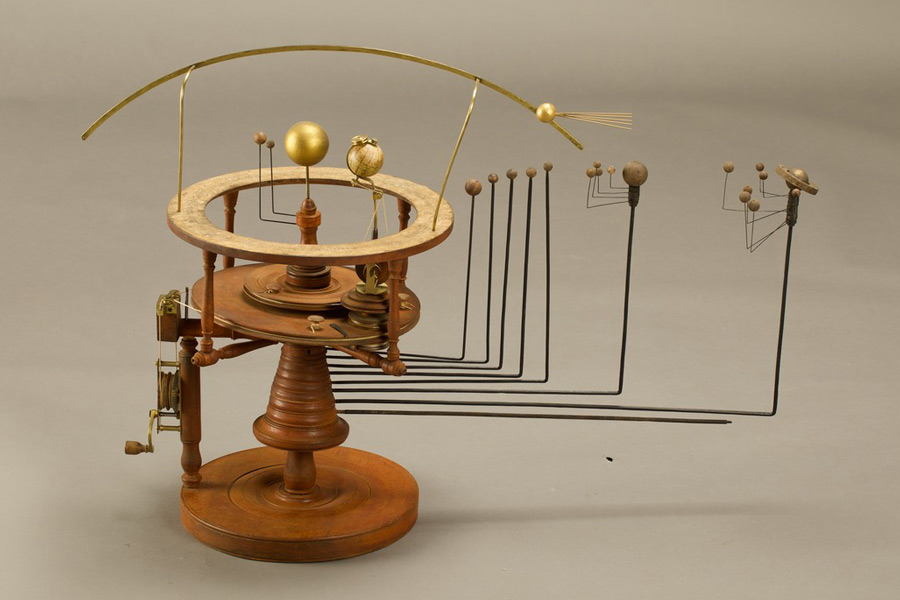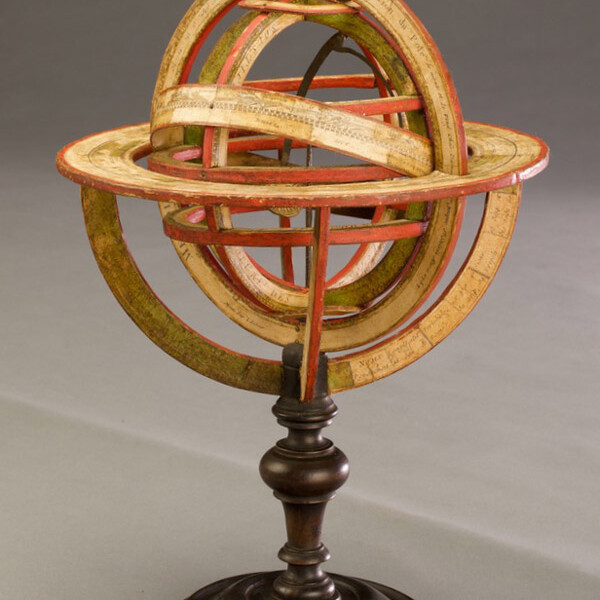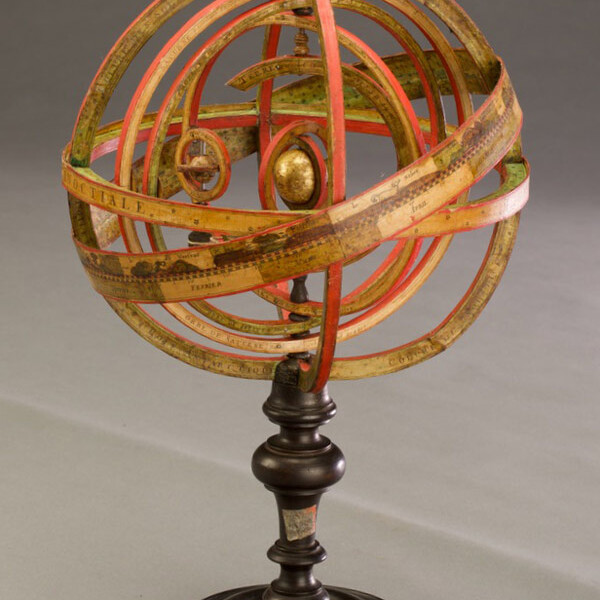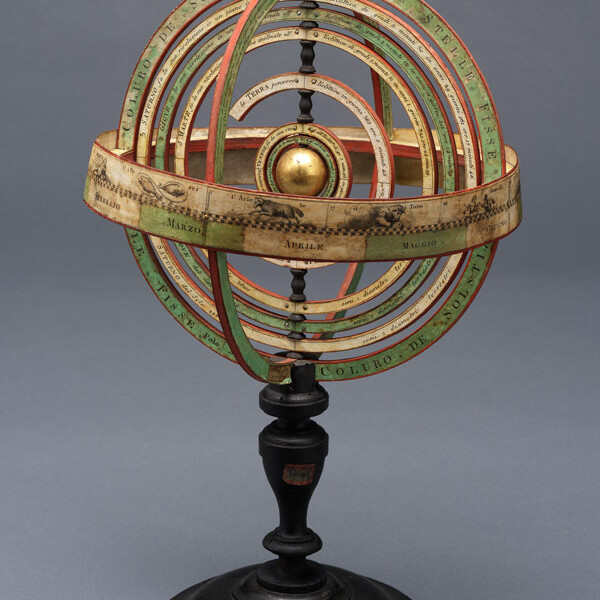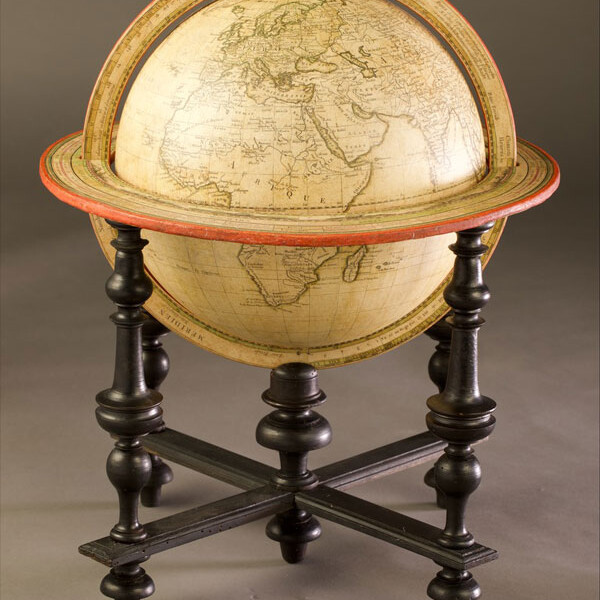This device reproduces the planets belonging to the Solar System. The inner part is enclosed in a horizontal circle representing the ecliptic (the Earth’s true orbit or the Sun’s apparent orbit); on the circle are marked the twelve constellations of the zodiac, the months of the year divided into days, the cardinal directions, the 16 main winds and the seasons.
A pin at the centre of the mechanism supports the golden solar globe, Mercury and Venus. The Earth, with an inclined axis, is a sphere covered with paper on which the continents are drawn; the Moon (now missing) was supported by a brass rod and could rotate around the Earth.
The outer planets: Mars (plus the four asteroids Vesta, Ceres, Pallas and Juno that orbit between Mars and Jupiter), Jupiter with its four satellites, Saturn with a ring and 7 satellites, and Uranus (now missing) are supported by brass rods fixed to the base.
A brass arch above the system represents a comet’s orbit.
The system of wheels operated by a side crank makes the platform move, simulating the Earth’s motion of revolution plus rotation around its axis, which is constantly inclined at about 23°. On the opposite side of the main pulley with respect to the Earth, there is an indicator which slides on the horizontal disc and represents the Sun’s apparent position throughout the year.
The planetarium enables explanation of phenomena related to the Earth’s movement, such as the seasons and the varying lengths of day and night. To show the succession of the seasons, the marker is placed in correspondence to the day in question and indicates the sun’s apparent position. If, for example, the platform is turned so that the indicator corresponds to June 21, the summer solstice, when the Sun passes from the constellation of Gemini to that of Cancer, the Earth, diametrically opposite the indicator, may be seen inclined towards the Sun: it is summer in the northern hemisphere and winter in the southern.
The planetarium was donated to the Departmental High School by the Prefect of the Serio Department in September 1812. It is signed by its maker Charles Rouy and dated.
Restored in 2017 by Paolo Brenni and Anna Giatti in the Fondazione Scienza e Tecnica laboratory in Florence.
Device on display.
